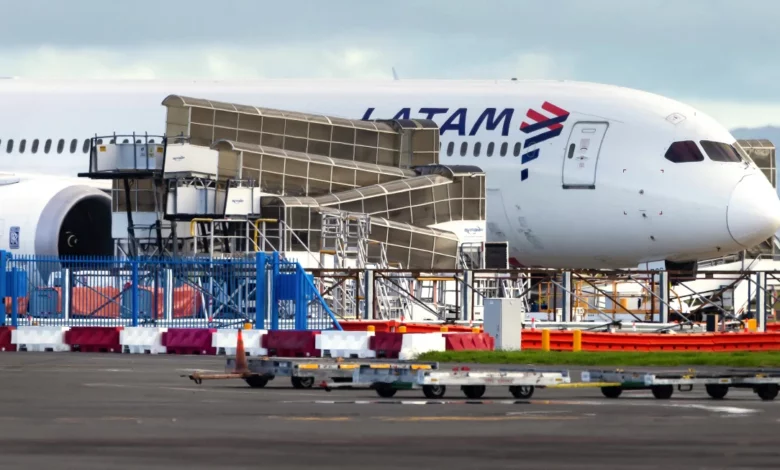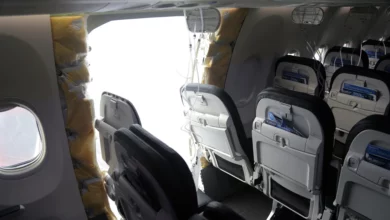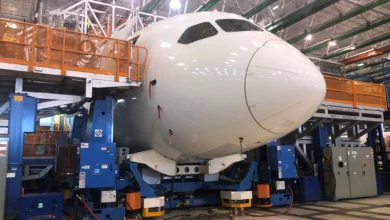
You’d think Boeing’s already miserable 2024 couldn’t get any worse. But on Monday, a 787 Dreamliner plunged suddenly mid-flight, injuring dozens of passengers, after a pilot said he temporarily lost control of the aircraft.
The pilot was able to recover and land the plane safely, but it’s not yet clear what caused the LATAM flight from Australia to New Zealand to fall so dramatically. LATAM called it a “technical event.” Boeing said it’s working to gather more information. But it’s not news Boeing’s management (or the flying public) needed right now.
The company’s nonstop streak of bad news began the first weekend of the year, when part of an Alaska Airlines 737 Max blew off the side of the plane just after takeoff. A preliminary federal investigation revealed that Boeing probably did not put the bolts in the so-called door plug that are designed to prevent the part from blowing off the plane.
That incident resulted in a temporary nationwide grounding of certain 737 Max jets, followed by congressional hearings, production and delivery delays, multiple federal investigations — including a criminal probe — and a stock that has lost a quarter of its value this year, shaving more than $40 billion off the company’s market valuation.
Between lawsuits, potential fines and lost business, Boeing could lose billions more dollars from the blowout.
But the bad news didn’t stop there. In February, pilots on a United Airlines 737 Max reported that the flight controls jammed as the plane landed in Newark. The National Transportation Safety Board is investigating. Two weeks ago, the Federal Aviation Administration flagged safety issues with the de-icing equipment on 737 Max and 787 Dreamliner models that could cause engines to lose thrust. The FAA is allowing the planes to continue flying and Boeing said the problem does not pose an immediate safety risk.
Then, last week, Boeing got more bad news: The NTSB said Boeing has not yet provided the company’s records documenting the steps taken on the assembly line for the door plug replacement on the Alaska Airlines jet. Boeing’s reason: Those records don’t actually exist.
And the FAA said Boeing’s safety and quality problems extend beyond its inability to produce paperwork. Reviewing Boeing’s production workflow and standards, FAA Administrator Mike Whitaker said Monday that the regulator found issues with “really important” aspects of Boeing’s manufacturing and assembly line.
“It wasn’t just paperwork issues,” Whitaker said at a news conference. “Sometimes, it’s the order the work is done. Sometimes it’s tool management. It sounds kind of pedestrian, but it’s really important in a factory that you have a way of tracking your tools effectively so that you have the right tool and that you know you haven’t left it behind.”
Boeing has said it is working on several of the issues Whitaker identified. The FAA has instructed the plane maker to submit a plan to fix its production problems by late May.
“Based on the FAA audit, our quality stand downs and the recent expert panel report, we continue to implement immediate changes and develop a comprehensive action plan to strengthen safety and quality, and build the confidence of our customers and their passengers,” Boeing said in a statement. “We are squarely focused on taking significant, demonstrated action with transparency at every turn.”
Boeing’s (BA) stock, which fell 3% Monday on the news about the terrifying LATAM flight, is down another 1.5% in premarket trading Tuesday. It’s the second-worst performer in the S&P 500, behind only Tesla.
But Boeing’s awful start to 2024 is about much more than its stock price. The company came into the year with an already bruised reputation. Restoring the confidence of airlines, regulators and passengers becomes more difficult with every new incident and bad headline.
CNN’s Colin McCullough and Greg Wallace contributed to this report.




